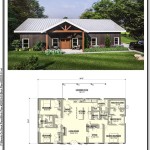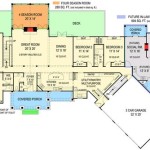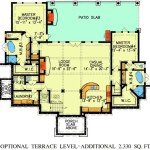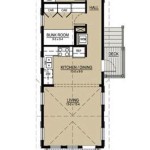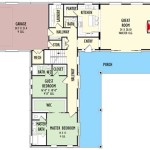Finding the Floor Plan for Your House
Locating the floor plan for a house is often crucial for renovations, insurance claims, understanding property boundaries, or simply satisfying curiosity about the original design. While the process may seem daunting, several avenues exist to acquire this valuable document. This article details the most common and effective methods for finding a house's floor plan.
Utilizing Public Records and Online Databases
Public records serve as a primary source for various property-related documents, including floor plans, particularly for newer constructions. These records are generally maintained by local government entities such as county recorder’s offices, city halls, or building departments. The efficacy of this method depends on the jurisdiction and the age of the property, as record-keeping practices have evolved over time.
County Recorder's Office: The county recorder's office typically houses records related to property ownership, including deeds, mortgages, and potentially, subdivision maps. Depending on the jurisdiction, floor plans might be included as part of the original building permit documentation or filed alongside the property deed. Searching through the county recorder’s online database, if available, can be a convenient starting point. Most offices offer online search portals where documents can be located using the property address, owner's name, or parcel number. If online access is limited or unavailable, a visit to the office may be necessary. Staff can often assist in navigating the records and locating the relevant documents. Fees may apply for copies of retrieved documents.
City Hall or Building Department: City Hall, specifically the building department or planning department, is another critical repository of property information. Building permits, required for most construction and renovation projects, often include detailed floor plans. These plans are typically submitted as part of the permit application process and are retained by the building department for record-keeping purposes. Accessing these records usually involves submitting a formal request to the department, specifying the property address and the reason for the request. Some municipalities offer online portals where building permits can be searched and viewed digitally. However, depending on the age of the property and local regulations, access to these records may be restricted or require physical review at the department's office. Fees for copies are common. It's essential to inquire about the department's specific procedures and requirements before submitting a request.
Online Property Assessment Databases: Many counties and municipalities maintain online property assessment databases. These databases are primarily used for tax assessment purposes and contain information about property characteristics, including square footage, number of rooms, and sometimes, a simplified version of the floor plan. While these depictions may not be as detailed as official floor plans, they can provide a general overview of the house's layout and dimensions. These databases are typically searchable by address, owner's name, or parcel number. The information available is often free to access and can be a valuable starting point for understanding the basic structure of the house. However, it is crucial to verify the accuracy of the information with other sources, as assessment data may not always be entirely up-to-date or comprehensive.
Contacting Professionals Involved in the Property’s History
Engaging with professionals who have worked on the property previously can be a fruitful strategy for uncovering floor plans. This approach involves direct communication with individuals or firms who were involved in the design, construction, or sale of the house. This method requires some research into the property's history to identify the relevant parties.
Architects and Builders: The architect who designed the house is the most likely source for obtaining the original floor plans. If the house is relatively new, contacting the architectural firm involved in its design may yield positive results. Even if the original architect is no longer affiliated with the firm, the company may retain records of past projects. Similarly, the original builder or construction company might have copies of the floor plans used during the construction process. Identifying the builder can be achieved by reviewing building permit records or consulting with neighbors who may have historical knowledge of the property. Contacting these professionals often involves explaining the reason for the request and providing as much information about the property as possible. They may charge a fee for retrieving and providing copies of the floor plans.
Real Estate Agents and Brokers: Real estate agents and brokers involved in the sale of the house may possess floor plans, especially if the property was recently listed. Marketing materials for real estate listings often include floor plans to attract potential buyers. While the agent may not have the original detailed plans, they might have a simplified version or a marketing brochure that includes a general layout. Contacting the real estate agency that handled the sale, if known, can be a quick way to potentially obtain a floor plan. However, the availability of floor plans from this source is not guaranteed, and the level of detail may vary depending on the marketing strategies employed at the time of the sale.
Previous Owners: Reaching out to previous owners of the house can be a valuable, although potentially more challenging, method. Previous owners might have retained copies of the original floor plans, either from the time of construction or from subsequent renovation projects. Locating previous owners can be accomplished by consulting property records, voter registration databases, or through neighborhood networking. Contacting previous owners requires a delicate approach, as their willingness to share information may vary. Explaining the reason for the request and assuring them that the information will be used responsibly can increase the likelihood of a positive response. While this method is not always successful, it can be a worthwhile endeavor, especially if other avenues have been exhausted.
Creating Your Own Floor Plan
If all other methods fail to produce the desired floor plan, creating a new one may be the only remaining option. This involves measuring the house's interior and exterior dimensions and drafting a floor plan based on those measurements. This approach requires meticulous attention to detail and a good understanding of architectural drawing principles. Several tools and resources are available to assist in this process.
Manual Measurement and Drafting: The traditional method of creating a floor plan involves taking manual measurements of the rooms, hallways, and exterior walls using a measuring tape or laser distance meter. The measurements are then meticulously recorded and used to draw a floor plan on paper or graph paper. This method requires a good understanding of scale and proportion, as well as the ability to accurately represent architectural features such as doors, windows, and walls. While this approach can be time-consuming, it allows for a high degree of accuracy and customization. Architectural rulers and protractors can aid in creating precise drawings. It is advisable to take multiple measurements and double-check them to minimize errors.
Using Floor Plan Software: Several software programs are available that simplify the process of creating floor plans. These programs typically offer a user-friendly interface and a library of pre-designed architectural elements, such as walls, doors, windows, and furniture. Users can input measurements and drag and drop elements to create a floor plan. Some programs even offer the ability to create 3D renderings of the floor plan, providing a more realistic visualization of the space. Floor plan software is available for both desktop computers and mobile devices, offering flexibility in terms of where and how the floor plan is created. Some popular software options include AutoCAD, SketchUp, and RoomSketcher. These programs often offer free trial periods or basic versions, allowing users to test their functionality before committing to a paid subscription.
Hiring a Professional: If creating a floor plan manually or using software proves to be too challenging, hiring a professional architect, draftsperson, or interior designer is a viable option. These professionals have the expertise and equipment to accurately measure and draft floor plans. They can also provide valuable insights into the design and functionality of the space. Hiring a professional ensures that the floor plan is accurate and meets specific requirements, such as compliance with building codes or specific design preferences. The cost of hiring a professional will vary depending on the size and complexity of the house, as well as the level of detail required in the floor plan. Obtaining quotes from multiple professionals and comparing their services and fees is recommended.
Finding the floor plan for a house can be a multi-faceted process requiring persistence and resourcefulness. By exploring public records, contacting relevant professionals, and considering the option of creating a new floor plan, individuals can successfully obtain the information they need for various purposes related to their property.

How To Find The Original Floor Plans For Your House

How To Find Floor Plans Blue Prints Of Your House

As Built Floor Plans

9 Ways To Find Floor Plans Of An Existing House Archid

How To Find Floor Plans Blue Prints Of Your House
How To Find Floor Plans Or Blueprints For My House It S In And 30 Years Old Is There Someone Who Could Draw Me The If Originals Are Impossible

9 Ways To Find Floor Plans Of An Existing House Archid

Design Your Own House Floor Plans Roomsketcher

Design Your Own House Floor Plans Roomsketcher

How To Find My Home S Floor Plan Storables


